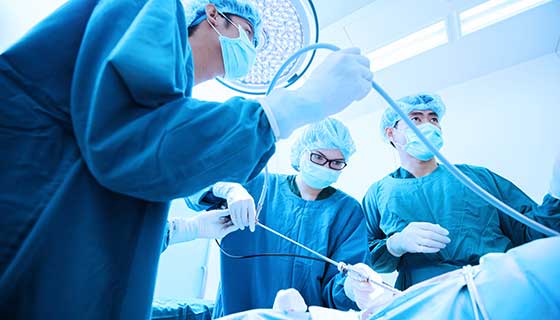The Significance of Follow-Up Treatment with the Best Spine Surgeons in St Louis MO
The Significance of Follow-Up Treatment with the Best Spine Surgeons in St Louis MO
Blog Article
A Summary of Back Conditions That Often Lead To Surgical Therapies
Spine problems such as herniated discs, spine stenosis, and degenerative disc condition often necessitate medical treatments when conservative therapies fall short to minimize persistent signs and symptoms. Recognizing the nuances of each problem and the matching surgical options, such as discectomy or spinal blend, is crucial for efficient monitoring.
Herniated Discs
Although numerous people with herniated discs might locate alleviation via traditional therapies, surgical treatment becomes a necessary consideration when symptoms intensify or persist - best spine surgeons in st louis mo. A herniated disc happens when the soft internal gel of a spine disc extends through its outer layer, possibly compressing neighboring nerves and leading to discomfort, tingling, or weakness in the extremities
Conventional monitoring normally includes physical therapy, discomfort medications, and corticosteroid injections, which intend to reduce swelling and boost function. In cases where these approaches fail to minimize devastating symptoms, surgical choices might be discovered.
The most common surgery for herniated discs is a discectomy, which entails the elimination of the herniated portion of the disc to alleviate pressure on the impacted nerve root. In more serious cases, spinal combination may be essential to stabilize the affected vertebrae.
Individuals are advised to discuss the potential risks and benefits of surgical treatment with their doctor to make an informed decision. Ultimately, the objective of any surgical intervention is to restore function, reduce pain, and improve overall lifestyle for individuals experiencing from herniated discs.
Spine Constriction
Spine stenosis occurs when the spaces within the back slim, bring about raised stress on the spine and nerves. This problem can create in numerous areas of the spinal column, including the back and cervical locations, typically because of age-related changes, such as degenerative disc disease, joint inflammation, or enlarging of ligaments.
Patients with back constriction may present with symptoms that consist of discomfort, tingling, tingling, or weak point, mostly in the legs or arms. These symptoms can be exacerbated by tasks that include standing or walking, frequently leading individuals to seek relief with traditional treatments like physical treatment, drugs, or epidural steroid shots.
However, when these non-surgical interventions fall short to supply ample relief, medical alternatives may be taken into consideration. Common surgical procedures for back constriction include laminectomy, which includes the elimination of component of the vertebra to reduce pressure, and spine blend, which stabilizes the affected area.
Spondylolisthesis
Spondylolisthesis happens when one vertebra slides ahead over an additional, bring about imbalance of the spinal column. This condition can arise from numerous factors, including hereditary defects, trauma, or degenerative adjustments in the spine. It is most typically observed in the lumbar area, especially at the L4-L5 and L5-S1 degrees.

Therapy options vary based upon the intensity of the slippage and the signs presented. Traditional actions, including physical therapy, discomfort monitoring, and activity modification, are usually the initial line of protection. When non-surgical approaches fall short to soothe symptoms or when significant nerve compression is existing, surgical intervention might be called for. Surgical alternatives can consist of spinal blend or decompression procedures, targeted at bring back placement and easing neurological signs. Early medical diagnosis and suitable management are vital for optimal results in patients with spondylolisthesis.
Degenerative Disc Illness
/0x0:512x512/prod01/channel_2/media/mccms/content-assets/academics/residencies-and-fellowships/spine-surgery-fellowship-minnesota/overview/final-512X512-OR710-2020-10-05_0007.jpg)
The problem can be detected through a mix of professional assessment, imaging research studies, and person background. When these methods stop working to give appropriate relief, surgical treatments might be considered.
Surgical alternatives for DDD may include spinal blend or artificial disc substitute, aimed at maintaining the impacted segment and minimizing discomfort (best spine surgeons in st louis why not try this out mo). Inevitably, the option of therapy is embellished, taking right into account the severity of the condition, individual wellness, and way of living elements
Spine Lumps

What variables add to the advancement of tumors within the back, and just how do they show up in people? Spinal tumors click for source can emerge from numerous aspects, including hereditary proneness, ecological impacts, and pre-existing clinical conditions. They can be categorized as primary growths, coming from the spinal column, or second growths, which spread from other regions of the body. Clients might present with a variety of signs, consisting of localized pain, neurological deficits, weakness, or adjustments in digestive tract and bladder feature, depending on the growth's size and location.
Surgical treatment might be called for to alleviate signs and symptoms, get a biopsy, or eliminate the tumor completely. The objective of surgical treatment is often to decompress neural elements and support the spine. Early detection and treatment are essential for enhancing end results in clients with spinal tumors.
Final Thought
In recap, back conditions such as herniated discs, spine stenosis, spondylolisthesis, degenerative disc illness, and spine growths frequently necessitate medical treatment due to their potential to trigger considerable discomfort and functional impairment. While traditional treatments may use short-term alleviation, surgical choices end up being important when symptoms get worse or persist. Timely diagnosis and treatment play a critical duty in restoring function and enhancing the quality of life for afflicted people, highlighting the relevance of thorough back treatment.

Report this page